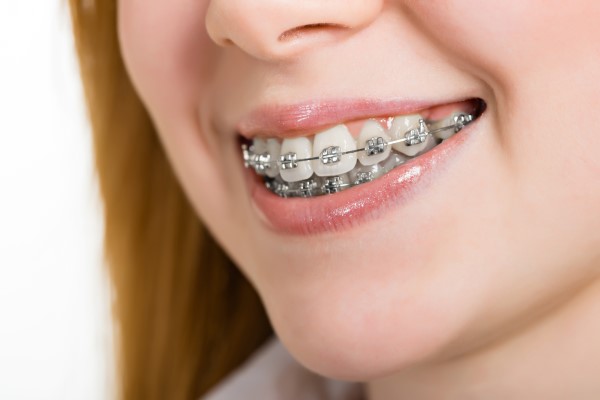A Top Orthodontist Discusses Phase 1 Orthodontics

There are three stages of orthodontics from a top orthodontist: planning (phase 1 orthodontics), active (phase 2 orthodontics), and retention. Many are familiar with the active stage when the patient wears orthodontic devices such as braces and aligners, as well as the retention stage, which focuses on keeping optimal jaw and teeth alignment.
However, phase 1 orthodontics is lesser known by parents but can be equally important for achieving a child’s optimal teeth and jaw alignment. This review from one of the top orthodontists in the area discusses phase 1 orthodontics, answering some of the more common questions that parents have and should know.
Phase 1 orthodontics: here is what parents should know
The more information you have about phase 1 orthodontics, the better you can feel about your decision as to whether or not it is right for your child. Here are answers to common parent questions about phase 1 orthodontics.
What is phase 1 orthodontics?
Phase 1 orthodontics, also called interceptive orthodontics or early orthodontics, is orthodontic treatment that occurs while the child still has baby teeth. Phase 1 orthodontics makes it easier to achieve a straight smile during phase 2 orthodontics. In many cases, children who go through phase 1 avoid the need for braces or clear aligners treatment altogether.
What are the benefits of phase 1 orthodontics?
The primary goal of phase 1 orthodontics is to create more space for permanent teeth to emerge. This means the primary benefit is a reduced risk of misalignments of the teeth and jaw due to spacing concerns. Phase 1 orthodontics can also help address issues such as protruding teeth at an early age. Additional benefits of phase 1 orthodontics include:
- Improved experience during phase 2 orthodontics
- A reduced risk of needing extractions
- A non-invasive start to orthodontic care
- Shorter treatment times for phase 2 (on average)
The benefits one patient receives may be entirely unique according to their situation. It is best to discuss the potential benefits with a top orthodontist to determine if early orthodontic treatment is appropriate.
What treatments are involved with phase 1 orthodontics?
The treatment plan varies based on the unique orthodontic needs of each child. However, there are some procedures that are more common and that your child’s orthodontist may be more likely to recommend. These common treatments include space maintainers, palatal expanders, and early braces. Ultimately, the recommended treatments depend on what the orthodontist discovers during the consultation visit, which involves several unique dental X-rays and an oral examination. Treatment can begin as soon as the next follow-up visit.
What is the age range for phase 1 orthodontics?
The most common age for phase 1 orthodontics is 7 or 8; children as young as 6 and as old as 12 may benefit from early orthodontic care. During this age, the orthodontist has a clear understanding of the child’s teeth development and their need for orthodontic care. However, primary teeth have not fully emerged yet, making it an optimal time for early intervention.
When should I consider phase 1 orthodontics for my child?
All children should visit the orthodontist at least once before they turn seven. During the first visit, the orthodontist can evaluate the child’s need for phase 1 orthodontics; keep in mind that not all children require early orthodontic care. There are certain signs that indicate a likely need for phase 1 treatment. These signs include:
- Teeth misalignment
- Teeth spacing issues (e.g. gaps, overcrowding)
- Protruding teeth
- Speech complications
- Disproportionate jaw
These concerns often lead to teeth not coming together correctly. This can cause complications such as the obstruction of permanent teeth from emerging through the gums properly. Early intervention can help ensure the successful growth of permanent teeth.
What happens after phase 1 orthodontics?
As mentioned, many children do not need phase 2 orthodontics after phase 1. Once phase 1 orthodontics is complete, the orthodontist can conduct a thorough evaluation of the patient’s teeth and jaw alignment. This involves dental X-rays and an oral examination. Children as young as 9 may be eligible for braces or clear aligners treatment, especially if they have gone through phase 2 treatment.
Schedule a visit with our orthodontist to discuss phase 1 orthodontics
We believe every child should be able to show off a well-aligned and beautiful smile at the earliest age possible. If you have questions about phase 1 orthodontics for your child and/or are ready to get started with treatment, then we encourage you to contact our orthodontic practice today to schedule a time for a consultation.
Request an appointment here: https://www.orthodonticprecision.com or call Precision Orthodontics & Pediatric Dentistry at (703) 391-8800 for an appointment in our Reston office.
Check out what others are saying about our services on Yelp: Read our Yelp reviews.
Recent Posts
Understanding the dental issues your pediatric dentist can treat will give you peace of mind. Children tend to be prone to falls and bumps. They are fond of sweets, and their teeth are still developing. Catching and treating pediatric dental issues early is important for your child’s dental health. If you want to know the…
Seeing your pediatric dentist before your baby’s first tooth erupts will help you prepare for that special moment. The changes you will face may be overwhelming at first, but you and your baby will surpass them. You must know what you can about your baby’s first tooth. If you want to find out about the…
Two of the most common pediatric dental treatments for cavities are fillings and crowns. Both dental fillings and dental crowns offer unique benefits, but one may be preferable to another depending on the specifics of the cavity needing treatment. This review discusses why a pediatric dental professional opts for either a filling or a crown.…
Our pediatric dentist says you can start using fluoride toothpaste to clean your baby’s teeth as soon as they start to erupt. Developing good oral hygiene habits early in a child’s life can help them to avoid oral health issues like tooth decay.Tooth decay is the leading dental issue that affects children, and acids made…


